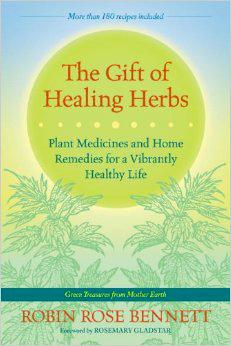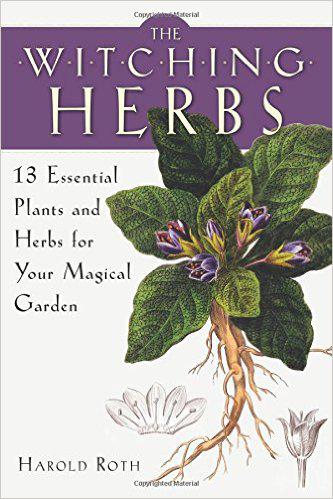The Gift of Healing Herbs: Plant Medicines and Home Remedies for a Vibrantly Healthy Life
Robin Rose Bennett
North Atlantic Books, 2014

Review by Rebecca Bailey.
In The Gift of Healing Herbs: Plant Medicines and Home Remedies for a Vibrantly Healthy Life, author Robin Rose Bennett sets a high goal: to write a 21st-century herbal that is practical for both rural gardeners and urban foragers, complete with a scientific look at the working systems of the human body and a thorough introduction to the concept of soulful healing. This book admirably and compassionately succeeds.
Bennett’s credentials for writing such a book are impressive. During her younger years, she studied with many well-known herbalists. Her biography states that she has been working as an herbalist in private practice since 1986, and that she has guest-lectured at prominent medical colleges throughout the United States.
The book’s organization is logical and systematic. The first four chapters cover the concept of healing, beginning with the statement that “All healing is spiritual healing,” and include the importance of ritual and ceremony in the healing process. The third chapter covers soulful healing. Bennett explains that “Soulful healing asks, while you are healing your body with herbs from the Earth, that you look for meaning in what is happening within your body as it related to your whole being . . . . The questions are: ‘What is the deeper teaching in this experience?’; ‘What is here for me?’; and ‘How can I make this experience an ally for my growth and transformation?’” (10). She goes on to stress the point that while we may see illness as keeping us from our path, “you cannot be off your path; your path is always under your feet” (11).
The largest, middle section discusses each of the body’s systems (the cardiovascular system, the nervous system, the respiratory system, and so on) and the herbs which are most nourishing to each of those systems
What are generally considered the most powerful healing herbs (hawthorn, nettles, dandelion, burdock, lavender, oats, slippery elm, etc.) are discussed at length with reference to the body system to which they provide the most benefit—for example, mullein with the respiratory system. Bennett’s approach to using herbs focuses on the “pro” rather than the “anti”; for example, she prefers terms such as pro-digestive and pro-circulatory to terms like antiparasitical or antifungal. “I think that affirming what the herbs can help us with is more in keeping with the energy and spirit of herbal medicine!” she writes (17).
Many examples of healing remedies are given throughout the book, case histories, if you will, almost all given from Bennett’s decades-long experience as a practicing herbalist, including how she has used herbs in support of her own health. If an herb is traditionally cited in the literature for a particular treatment but she hasn’t used it in that capacity herself, she says so, and gives a reference for the information.
This is definitely a North American herbal, specifically of the eastern United States. The majority of the herbs are common in the wild or easily nurtured in a garden; most can be bought dried in health food stores. Endangered plants, such as American ginseng and goldenseal, receive less focus here than in many herbals, which I find a respectful way of honoring the plants.
The last section of the book is called “Everything is Medicine,” a chronicle of the many common foods in our kitchens can be used to strengthen and tonify specific body systems.
I especially enjoyed some of the less-expected information, such as herbs for treating tick-borne diseases, herbs for dental health, and how to make an herbal electrolyte replacer with two very common ingredients. I learned more about my life-long ally dandelion, and found some great ideas for additional ways to use her flowers. The author’s recipe for mullein cough syrup is similar to the one my grandmother used, and even though I once loudly proclaimed that I’d rather be sick than swallow it, I’m thinking that it might at last be time for me to make some myself.
The book is readable and rational, spiritual, creative, and inspiring. It’s fun to read. The section on making herbal preparations is clear and easy to follow, references plentiful, stories well-told and to the point. If you’re in the market for a new herbal, to update or begin your library of traditional medicine, Robin Rose Bennett’s The Gift of Healing Herbs is an excellent choice, not the least because the author obviously loves people as well as plants. This readable and useful book is very highly recommended.

